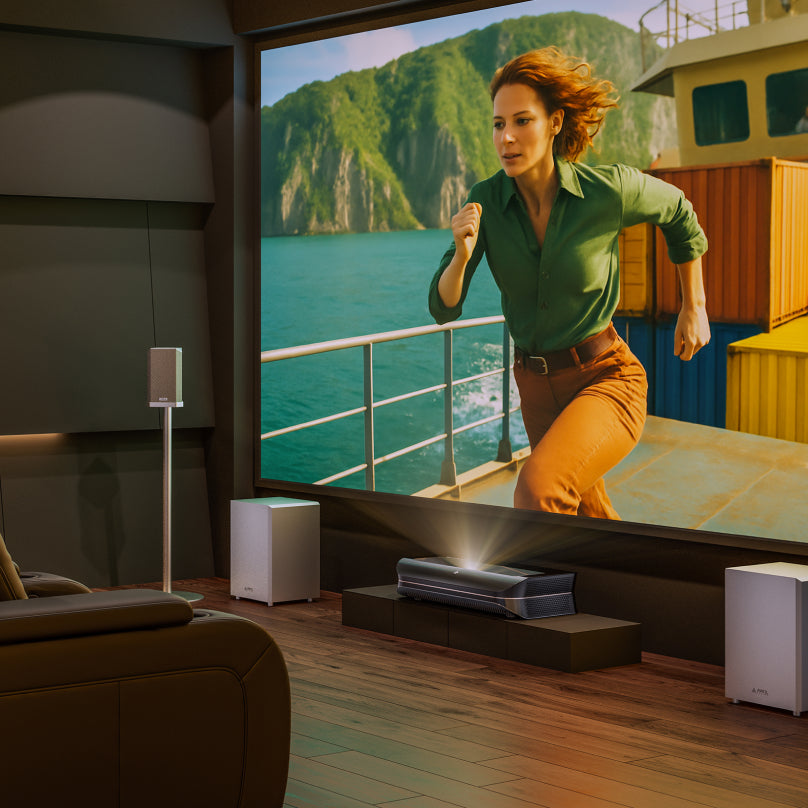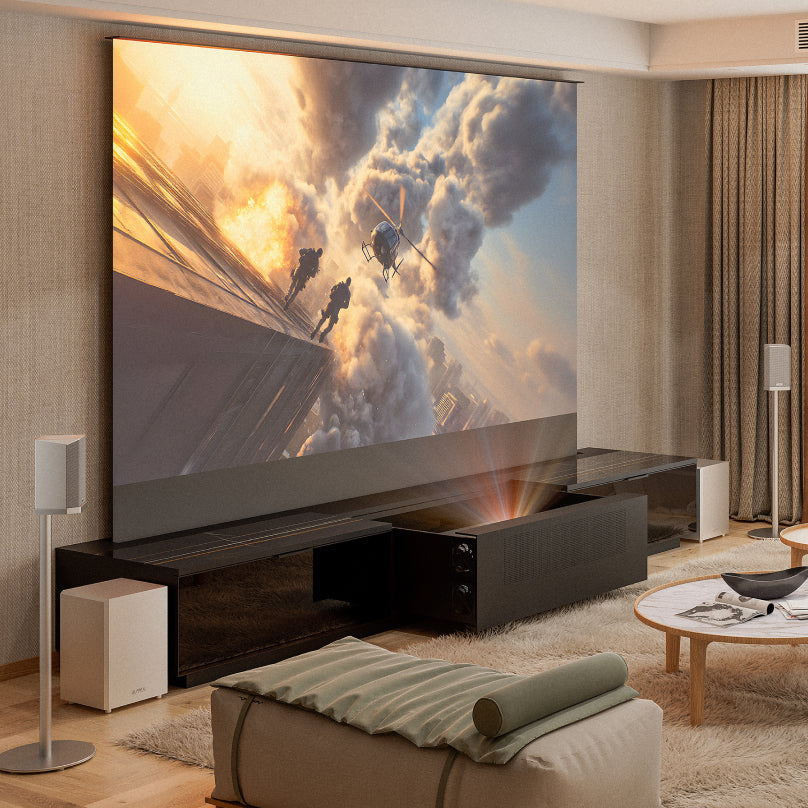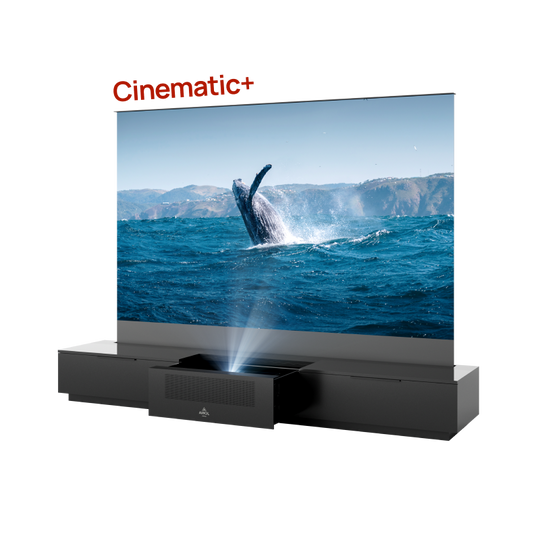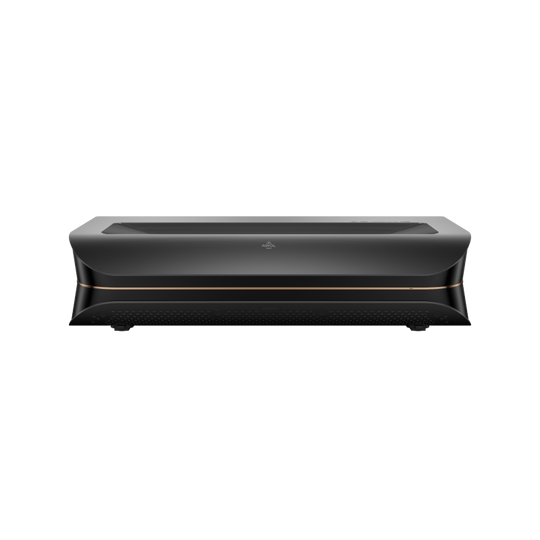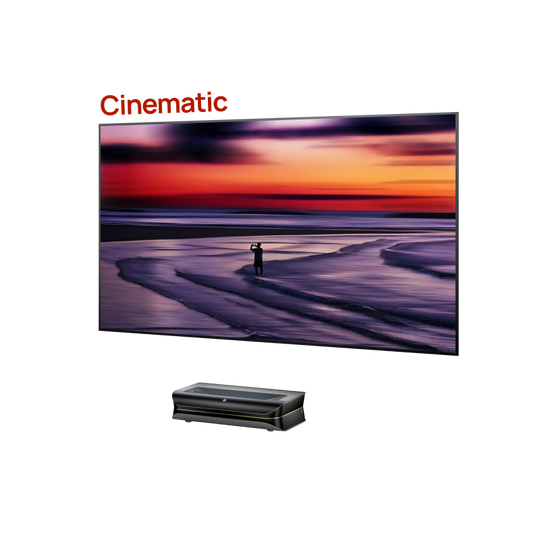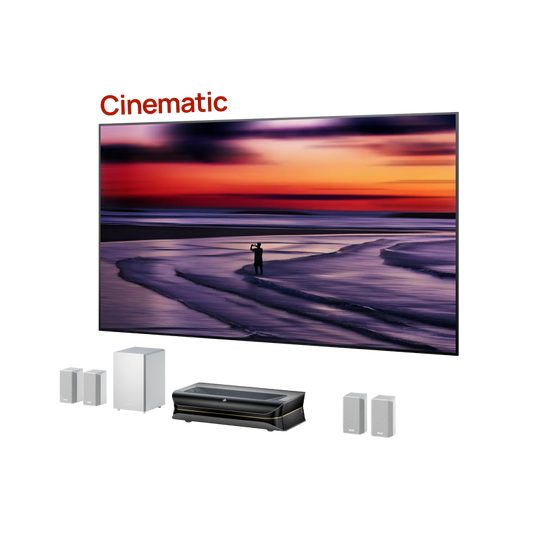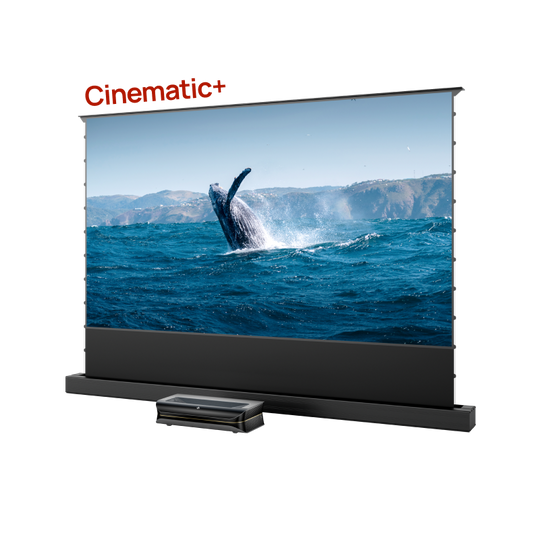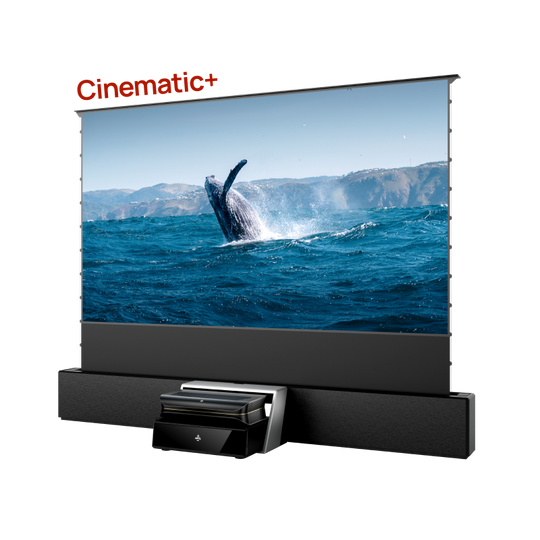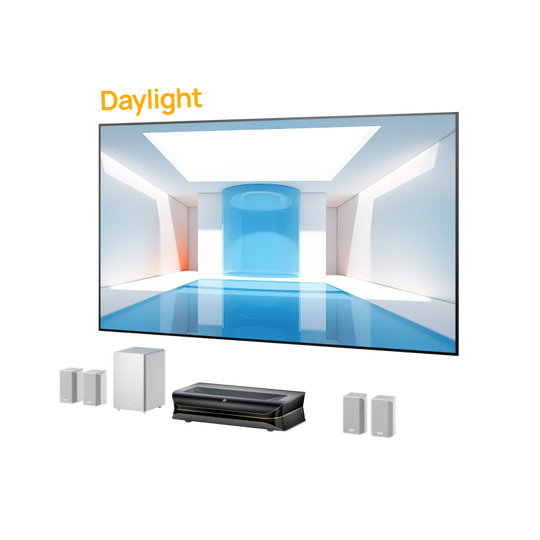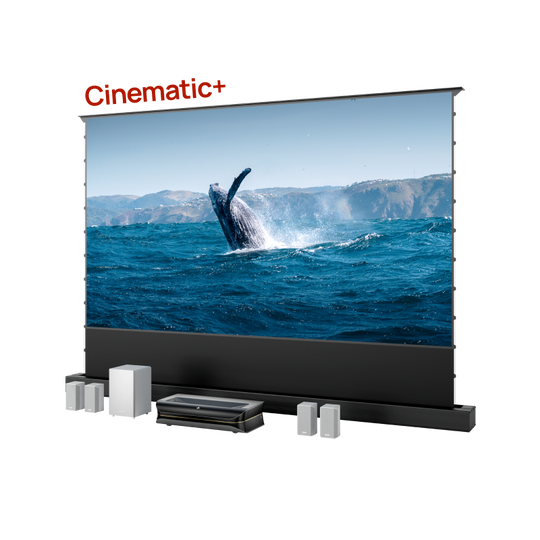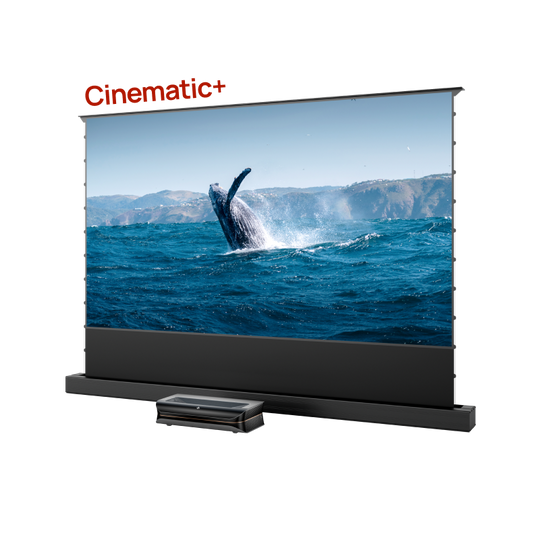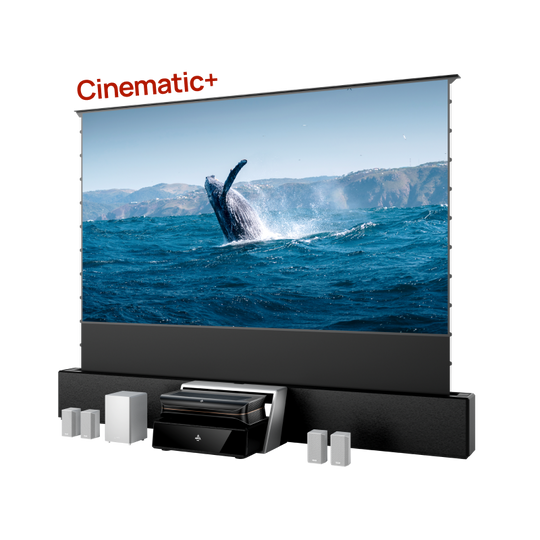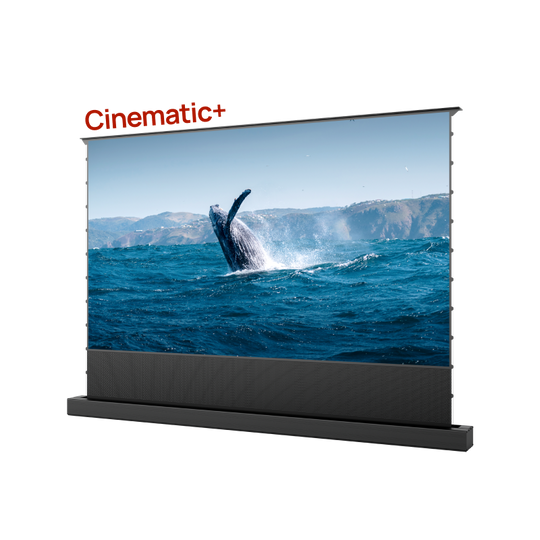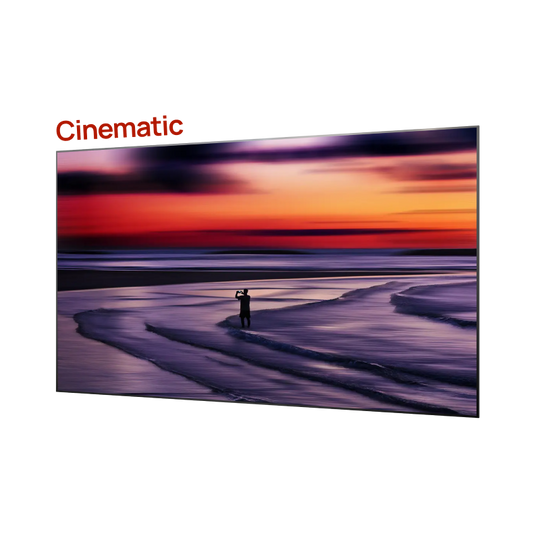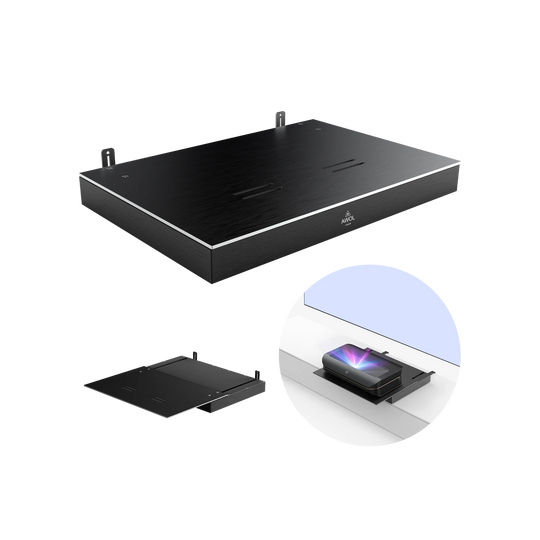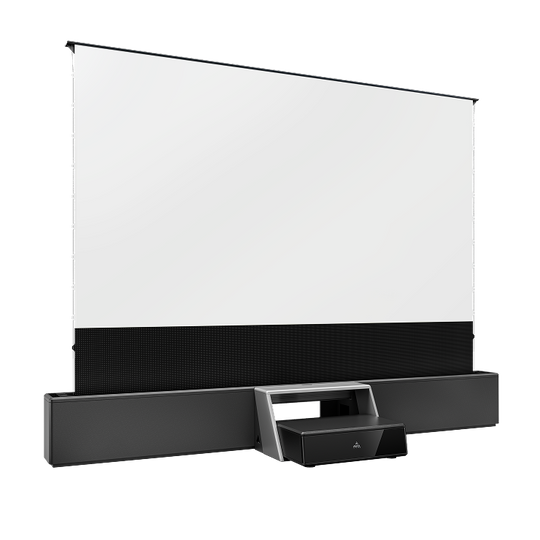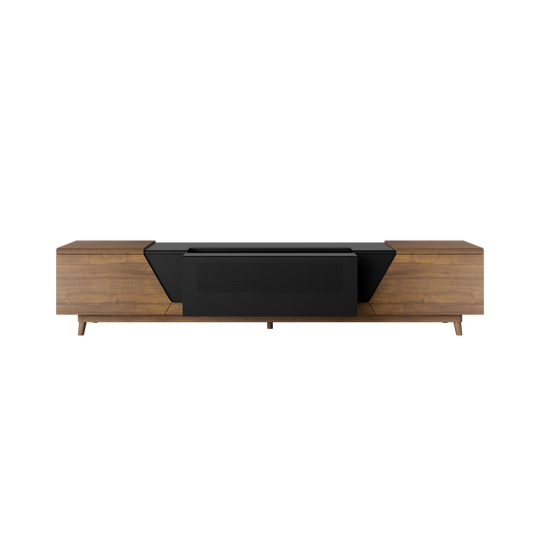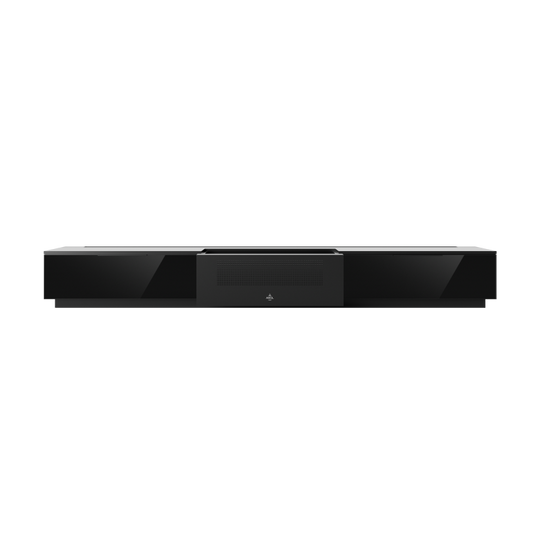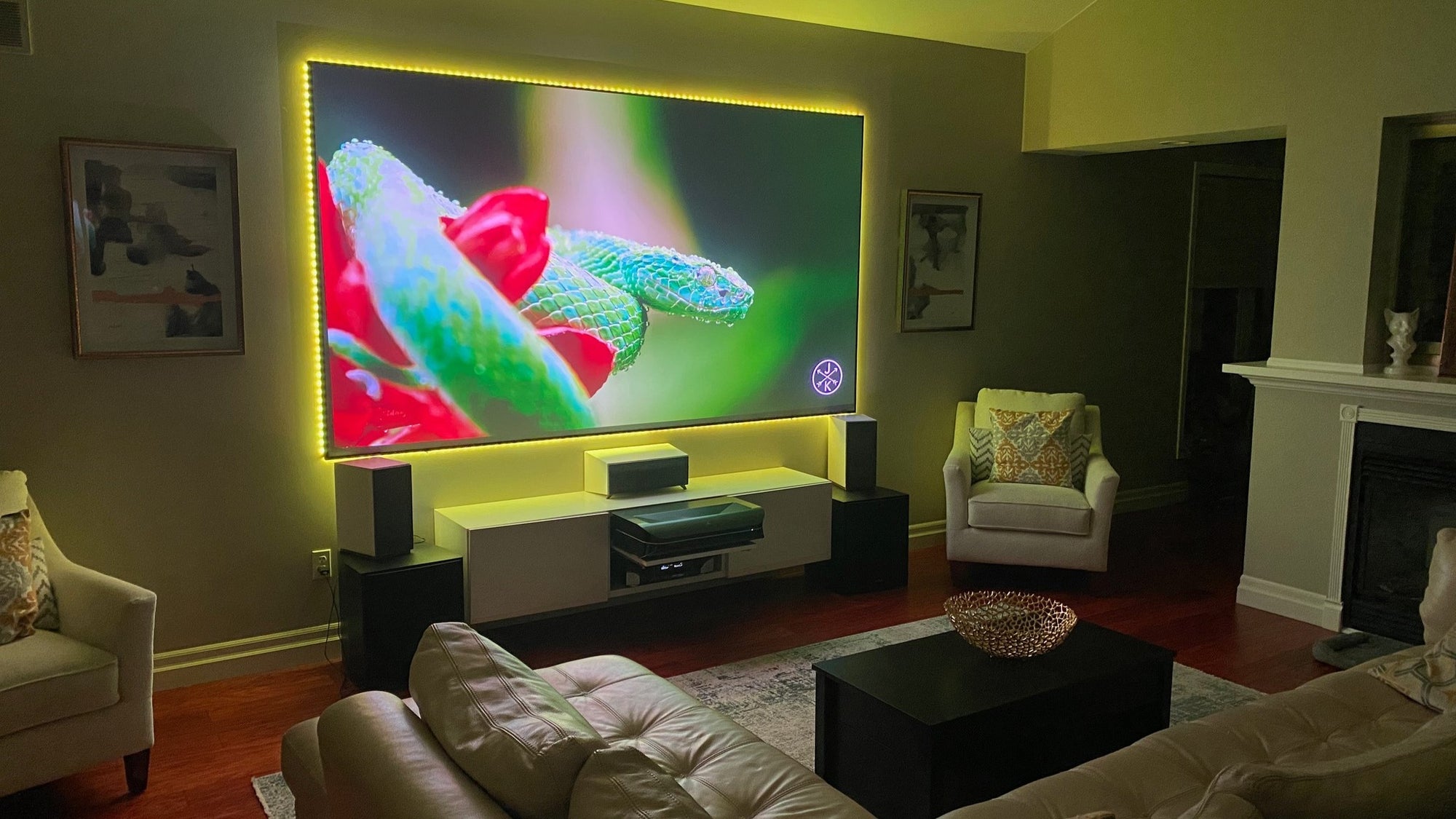What is more fascinating than that is watching media on a 120-inch screen with high-definition 4K in the comfort of your own home.
While we might wish to have a 100-inch flat-screen television, the price is a deal-breaker for most brands and sizes above 85 inches. Therefore, most people picture a large black box projecting across the room to a large screen mounted on the wall. But traditional projectors have their own cons.
As TV technology evolves, an important innovative display is making headlines: the Laser TV. Designed specifically for large sizes, laser TVs typically feature screens starting at 100 inches and can go beyond 150 inches. Leading the way in this field is the brand AWOL Vision, which has made the ultra-short throw projector possible. This technology eliminates the challenges of ambient lighting and distance, which used to be major issues.
Additionally, AWOL Vision offers a variety of ALR screens in different sizes. For those who want to watch movies on a giant screen but don’t have enough room or money to buy a big TV, AWOL Vision’s Laser TV is the perfect choice.
But before you buy a laser TV, this guide is for you.
What Is A Laser TV?
Surprisingly, a laser TV is not a TV in the conventional sense, but rather a sort of large-screen home theater projector. A laser TV is actually an ultra-short throw projector with a few extra parts added to the package. A short-throw projector can produce very large images even when positioned a few images away from a screen or even a wall. This means you can position the projector on a TV stand or UST smart cabinet, eliminating the need to install a projector on a ceiling or find a location to set it. This convenience is designed to make your home entertainment setup hassle-free.
Compared to traditional LED TVs and telephoto projectors, Laser TVs offer several compelling advantages. They occupy less space in your home, deliver exceptional visual performance, seamlessly integrate with other smart devices, and protect viewers' eyesight with reduced blue light emission. Furthermore, they are energy-efficient and straightforward to install. These sophisticated features make Laser TVs an enticing option for those seeking a premium home theater experience.

Because laser TVs provide a large-screen solution to so many projector problems, they can attract the same audience as a flat panel TV but at a significantly lower cost. This means that by choosing a laser TV, you're not only getting a high-quality viewing experience, but you're also making a smart financial decision.
Key Considerations for Buying a Laser TV:
Considering the following factors when purchasing a Laser TV can help you make the right choice for your home entertainment needs.
Important Parameters:
The following key parameters contribute a great deal to the picture quality and the impact that the picture can produce:
Brightness
Brightness, measured in lumens, is a crucial factor in the picture quality and general visibility of a Laser TV. The higher the brightness, the sharper and more visible the picture will be.
Color Gamut
The Color Gamut of a Laser TV refers to the range of colors. The higher the Color Gamut, the richer and fuller the colors on the screen will be. This is particularly important for Laser TVs, as a high Color Gamut can significantly enhance the visual impact of the content being displayed.
Throw ratio
The Throw Ratio of a Laser TV is a calculated value that determines the size of the projector screen and the distance required to place the Laser TV. In simpler terms, it tells you how far you need to place the Laser TV from the screen or wall to get the desired image size. An ultra-short throw projector, for example, allows you to mount the projector at a short distance or just in front of the screen/wall.
Contrast
The contrast evaluates the varying levels of luminosity of the white and the black levels in the image, which determines the sharpness and the readability of the picture.
Screen Size and Screen Types:
Screen size is important to consider whether you are watching a movie, giving a lecture during the day, or delivering presentations in your office. When the size increases, the brightness in the laser TV has to increase for a sharp, clear image. So, if you have to use projectors in ambient lighting, consider the brightness above 2000 lumen.

Users can also consider Ambient Rejecting Light (ALR) screen types to reduce glare by rejecting light from directions other than projectors. At AWOL Vision, screens are available in multiple sizes:
- 100-inch: 88 x 49.8 inches
- 120-inch: 105.4 x 60 inches
- 132-inch: 115.1 x 64.7 inches
- 150-inch: 130.7 x 73.5 inches
Audio Output:
The Audio Output of a Laser TV is important, as it can impact your viewing experience. Many Laser TVs come with an integrated audio system, which can provide a more immersive and enjoyable sound experience. The quality and power of the speakers are also important, as they can affect the clarity and volume of the sound. For example, an ultra-short throw projector cabinet can accommodate larger, deeper speakers, which can provide a sound experience similar to a sound bar.
When you can't experience them in person in offline physical stores, there is a decoding certification to judge, such as AWOL Vision Vanish laser TV, which is equipped with the Dolby, which can make a better home theater experience. The speakers' output power and sound quality are the other factors determining the auditory effects of the speakers.
Projector Distance:
To determine the optimal projector distance, look at the screen size in the model specs. For a 100", the minimum distance between the screen and the projector can be 2.5 meters as per instructions.
Moreover, you don't need a large space to project onto a large screen with today's UST projectors. These ultra-short-throw projectors easily set up and create big-screen theaters in small spaces. AWOL Vision Vanish projectors come with specially designed UST cabinets that hide a projector elegantly and are perfect for small apartments.
Discover the AWOL Vision LTV-3500 Pro
For an unparalleled home theater experience, consider the AWOL Vision LTV-3500 Pro. This 4K 3D Triple Laser Projector features 3500 peak lumens brightness, making it ideal for daytime viewing on screens up to 150 inches. It boasts Dolby Vision and HDR10+ for stunning visual clarity and true-to-life colors, and it seamlessly integrates with smart home systems like Control4. With low input lag for gaming, energy efficiency, and advanced audio technologies, the LTV-3500 Pro stands out as a top-tier option for home entertainment.
Conclusion
Every movie, television, and sports lover desires that big-screen experience. To select the ideal Laser TV for your home, you must know the ideal screen size and distance. Get familiar with key parameters such as brightness, contrast, throw ratio, and color gamut. Invest in AWOL Vision Laser TV, which provides the perfect home theater projector.
